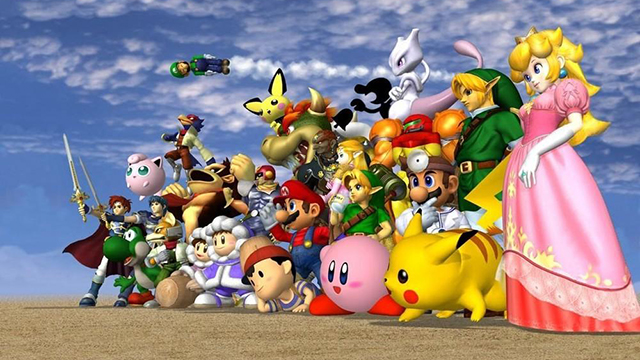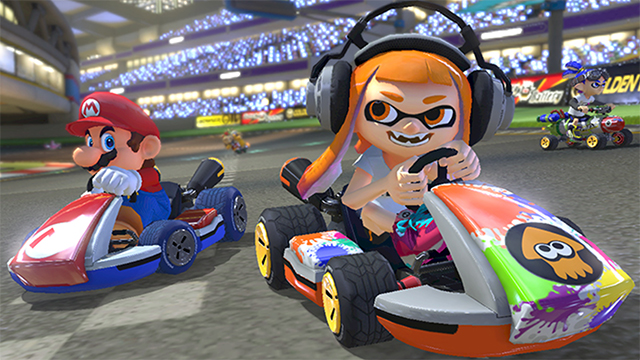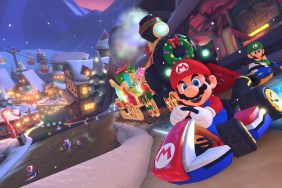You may have heard by now that Mario Kart 8’s notorious speed exploit known as “fire hopping” has been axed by Nintendo from Switch’s Deluxe edition of the game. I won’t delve into a detailed history of the mechanic here, but essentially it allows advanced players to extend the length of their post-slide speed boost by hopping, and straddles the line between strategy and exploit in the eyes of the game’s fanbase. The point is, those days are over, and Nintendo has made the decision for us.
Fire hopping is no more in Deluxe, and I’ve been able to confirm this via my own copy in addition to the numerous videos cropping up online demonstrating the very same thing. There are undoubtedly those who don't love the decision, but I do feel it suits Mario Kart.
Though “frogging” (as fire hopping is also apparently called) was not nearly as severe, recall “snaking” from Mario Kart DS. The technique enables continued sliding for infinite speed-boost, resulting in world records and all sorts of wild achievements across not just the DS version, but also Mario Kart 64 and GameCube’s Double Dash!! That may sound like harmless fun, but anyone who played Mario Kart DS online knows better; it severely damaged the experience, rendering the exploit absolutely essential and crippling the efforts of anyone looking to race like a normal human being.
Regardless of your stance, both instances raise questions about which player discoveries should and shouldn’t be allowed in games simply because they weren’t intended. Competition surely plays a role; for example, I’d be very displeased if Nintendo decided to remove the dozens of creative discoveries in Breath of the Wild simply because the Zelda team hadn’t dreamt all of them up in advance. Still, Breath of the Wild has proven to be a sandbox, while franchises like Mario Kart or Super Smash Bros. are not. Further still, Super Smash has evolved into something far more serious in professional spheres than HAL Laboratory likely ever imagined back in 1999, while Mario Kart remains decidedly casual and intentionally so. I’ve little doubt many of these lines of thought are weighed when deciding whether or not to nix something like fire hopping.
There’s also speedrunning to consider, a far different beast than setting literal speed records in a racing game, often the entire point of racers in the first place. I’ve written before about Zelda glitches, one among them being Wind Waker’s “super swims” that have enabled speedrunners to traverse the ocean at comically breakneck speeds, achieving faster completion times than would otherwise be possible. Since speedrunning is a hobby that isn’t formally condoned in the game, nor is it arranged for online competition using the game’s own matchmaking and scorekeeping systems, it was likely deemed as harmless and acceptable to leave be. I expect the same conclusion from Nintendo regarding most of Breath of the Wild’s quirks.

No matter how you slice it Mario Kart is a different beast, different even from Smash Bros. in that far more children and casual gamers are playing online. These are folks whose enjoyment can be severely and easily hampered, especially when continuously smoked by exploit geeks who won’t quit “frogging” their way to victory. To be fair, I wouldn’t be surprised if half the time it’s savage 12-year-olds doing the frogging anyway, but the concept and ultimate point of the decision remains the same. The purpose of Mario Kart isn’t, and never will be, to have certain players feeling left out or like they can’t win. It’s why blue shells exist in the first place.
The eradication of player-found exploits is not by default controversial, and after a brief mourning period by certain fans I expect the situation with Mario Kart 8 will be soon forgotten anyway. Who knows, perhaps the Switch edition holds new advantages waiting to be uncovered, particularly regarding its Battle arenas and the numerous game modes that go with them. Thankfully there’s little risk of the classic exploits-turned-strategy of, say, established competitive titles like Super Smash Bros. Melee being canned, though I do wonder if competitive games can ever develop their strategic core the way Melee did in the age of rampant patching and post-launch adjustment. We won’t ever know for sure, but for the time being, the longer I can hold my own against the truly insane Mario Kart masters found in competitive matches online, the happier I’ll be.







